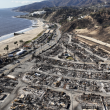Three events occurred earlier this month that confirm yet again what a dynamic city we’ve got here in Fresno.
They also underscore the importance of making the right decision on one of the most high profile propositions on the November general election ballot.
First, there was a seemingly routine housing project that went to the Planning Commission on Aug. 15.
Woodside Homes owns about 78 acres in east-central Fresno; more specifically, we’re talking about a site on the east side of Fowler Avenue, between Clinton and McKinley avenues. The city’s new Southeast Surface Water Treatment Plant is only half-mile away, to the south.
Woodside’s project includes green space and room for a Clovis Unified elementary school. The heart of the project is a tract of 210 single-family homes.
The items before the commissioners included the vesting of a tentative tract map and a general plan amendment. The project also has an annexation application to Fresno LAFCO. The 78 acres aren’t within Fresno’s boundaries but they are within the city’s sphere of influence.
Only one person spoke against the project. I couldn’t catch the man’s name on the video – Chiang, I think I heard. He said he and his family live near the project site. He said they enjoy their rural-residential lifestyle. He felt that would surely change once the site was annexed to the city and the project was built out.
Several commissioners said they sympathized with the property-owner. But the commission said you can’t stop progress. The commission unanimously recommended that the City Council at a future date approve the Woodside project.
A week later, on Aug. 22, the Steering Committee for the West Area Specific Plan met at Glacier Point Middle School (west of Highway 99) and made a choice among several “conceptual land use” options.
According to an email from the planning department’s Rodney Horton, committee members unanimously picked Option No. 2.
The West Area is bounded by Garfield Avenue on the west, 99 on the east and Clinton Avenue on the south. There’s a lot of growth out there already. City Hall’s challenge is putting the pieces in place so future growth both complements the existing environment and unfolds in a manner less chaotic than what preceded it.
Option 2, according to Horton’s email, calls for “moderate change.” That means 1.) lower density throughout the plan area; 2.) a mixed-used town center along Shaw Avenue; 3.) the focusing of density and commercial development on portions of the Ashlan, Blythe and Clinton corridors; 4.) an effort to encourage the redevelopment of existing rural-residential sites.
Horton in his email said city staff will now prepare a draft specific plan that will be released at Steering Committee’s Oct. 24 meeting (at Glacier Point). That will start a 30-day public comment period.
Finally, officials from City Hall and Fresno Metro Ministry held another of their “Better Blackstone Redesign Challenge” community meetings on Aug. 23.
I wrote about this project last week in CVObserver. Blackstone Avenue, the geographical spine of Fresno, is ripe for reinvention.
“The middle of Fresno needs some love,” Metro Ministry Executive Director Keith Bergthold told about 100 residents and activists gathered at the Ted C. Wills Community Center.
This particular planning project is concentrating on only a portion of Blackstone – from the Highway 180 overpass in the south to Dakota Avenue in the north.
Considerable outreach to the nearby neighborhoods has already occurred. Residents appreciate Blackstone’s vitality. But they find Blackstone to be too full of blight. There’s a dearth of landscaping. The street is too wide for some pedestrians trying to make a less-than-hurried crossing. Bicyclists use Blackstone at considerable risk. Vehicular traffic zooms in both directions.
I’ve already noted that one possible solution is a road “diet” that eliminates a lane or two and perhaps some on-street parking, thus creating opportunity for features friendly to pedestrians and bicyclists. I was surprised at Ted C. Wills to learn that another possible solution is reducing Blackstone’s speed limit to 35 miles per hour, and even 30 at a later date.
That would be something – to see cars and trucks moving along Blackstone at speeds only slightly higher than in school zones when the kids are about.
Taken together, these events show Fresno to a place on the move. We’re expanding. We’re rebuilding a neglected but important region of the city. We’re revitalizing the city’s center. There is no shortage of imagination and initiative at play.
And, like it or not, the key to making everything work is a strong road transportation system.
Will Tackett, supervising planner, notes in his staff report on the Woodside Homes project that the City Council has already adopted new Official Plan Lines for McKinley Avenue rights-of-way “for purposes of future investment and development.”
Horton, a Planner III, included in his email a map of a redesigned West Area. Cutting through the middle of the West of 99 area, from Herndon Avenue to Ashlan, is a fully developed Veterans Boulevard.
Bergthold, a top city planner for many years, noted that the Blackstone redesign project is being funded by a grant from Caltrans. He added that the goal is to build more mixed-used developments along Blackstone. How the street is configured, he said, “can be very helpful to that.”
A well-designed, well-maintained road system is pivotal to it all. When I say “all,” I include free enterprise and the liberty to pursue our dreams. That takes money.
I hope voters keep this in mind when they decide how to vote on Proposition 6 in the general election. To me, it makes no sense to shortchange our road system’s funding stream just to make a short-term political point about who’s in charge in Sacramento.










Change? The taxes that prop 6 will repeal have been in place for less than a year. Have you read prop 6? More money will be allocated to road repairs than at the present time. Just less to the train and other areas One time political l statement? You must have a lot more money than most of us. This is a forever savings and requires voter approval for new taxes. Is there a problem with voter participation in these decisions?
With all this growth comes the need for enhanced public transprtation. Maybe in my lifetime I will see Fresno (and into Clovis) have a light rail system. Think Sacramento?